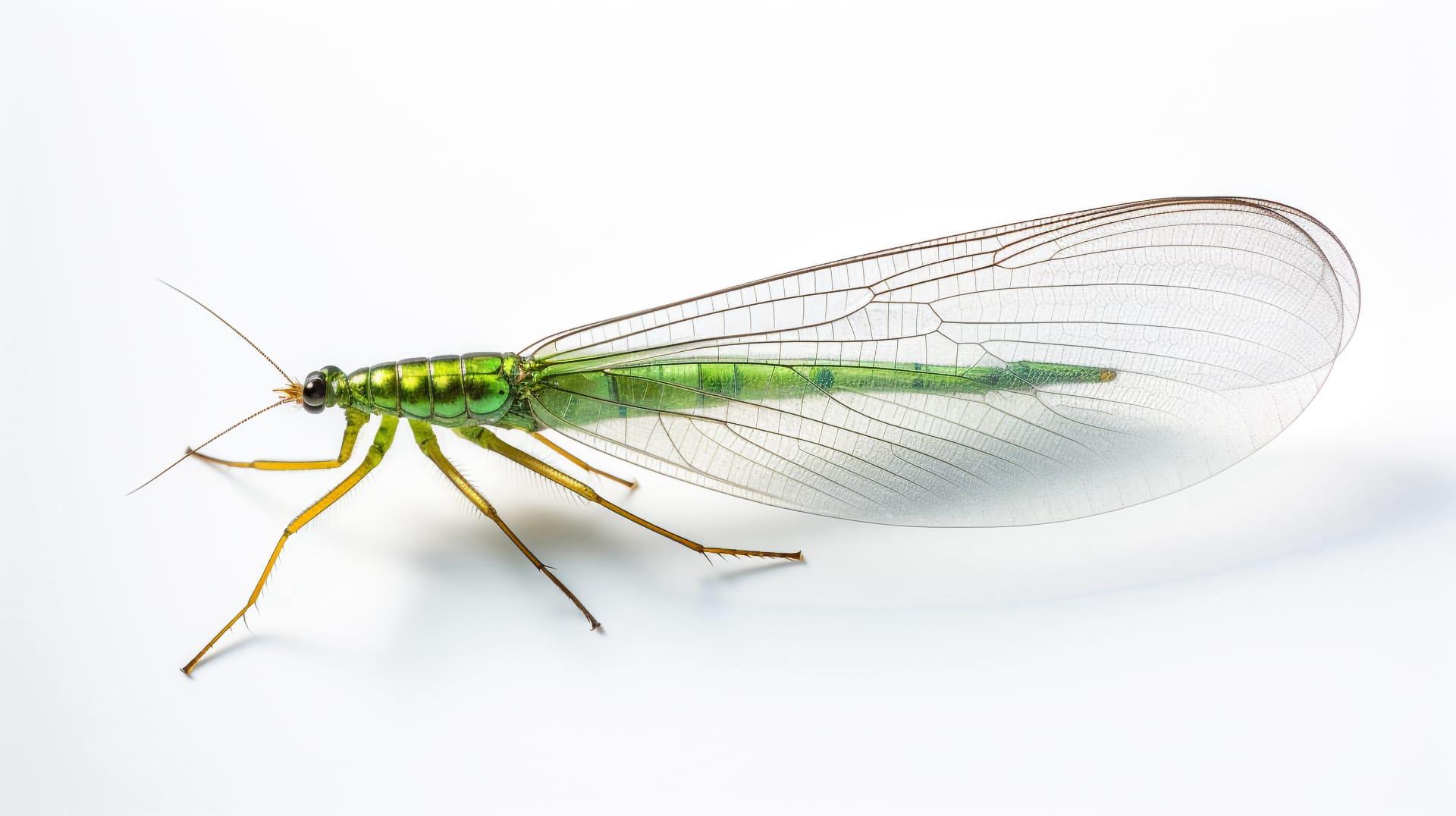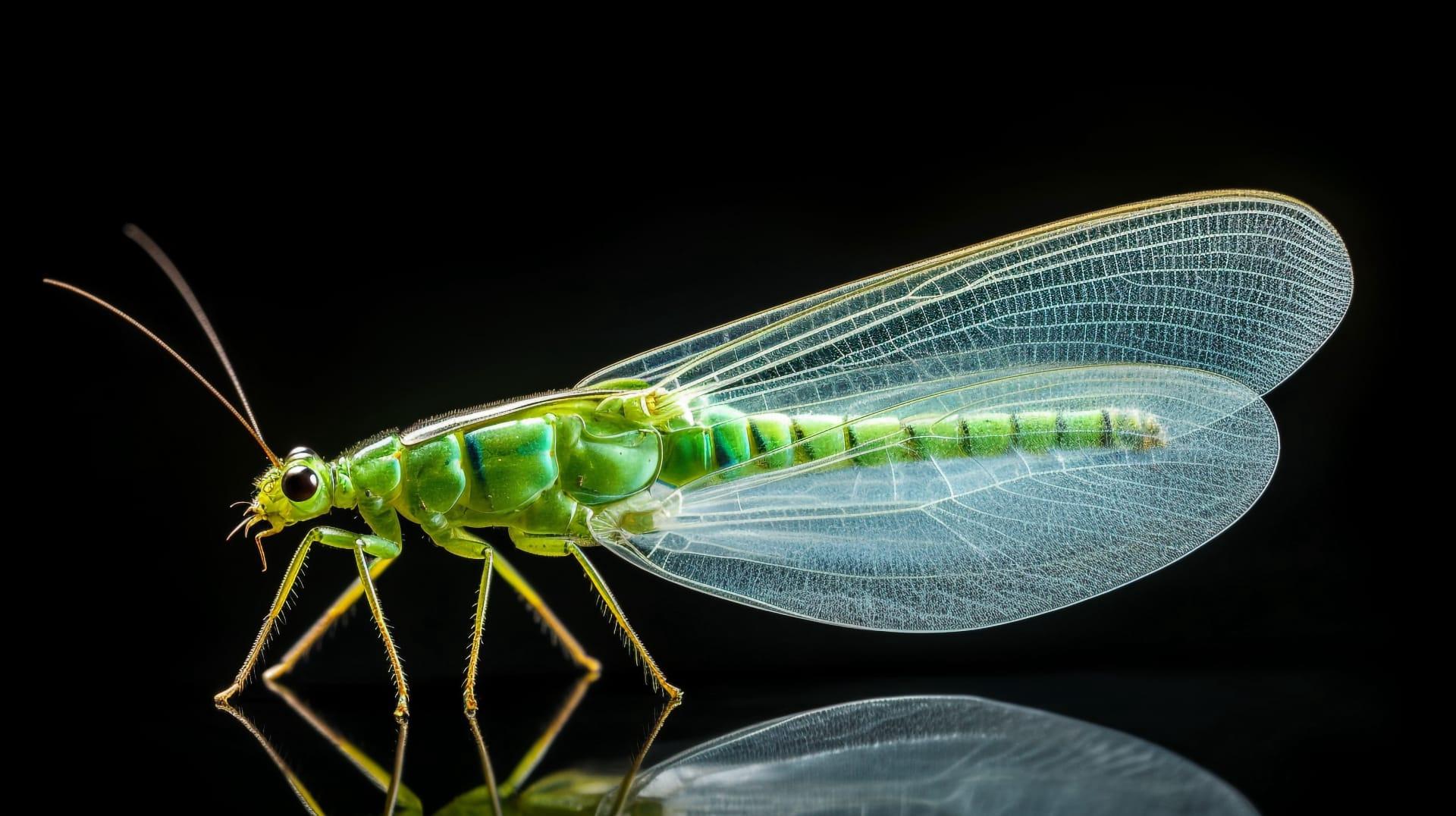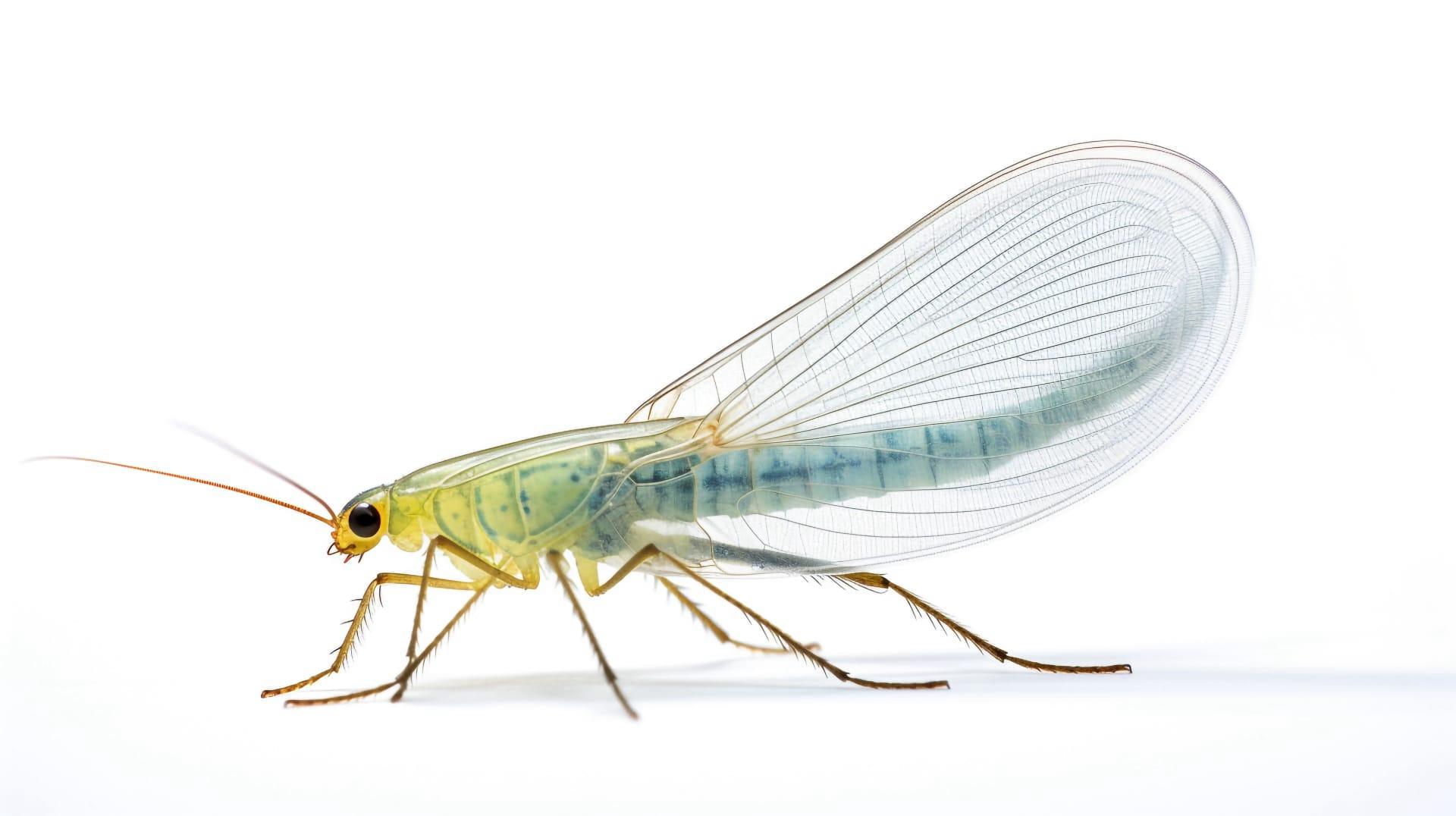Lacewings Characteristics
- Home /
- Mini Encyclopedia /
- Animal /
- Lacewings Characteristics
1
Lacewings, intriguing insects often admired for their delicate wings, exhibit a range of physical characteristics that set them apart in the insect world. On average, an adult lacewing measures about 0.6 to 1.2 inches (1.5 to 3 cm) in length, with a pale green or brown body and large, transparent wings that can span up to 2.4 inches (6 cm). These wings, from which they derive their name, are veined and resemble fine lace. Lacewings are also recognized for their relatively long lifespan compared to other insects, with adults living up to a few weeks, and some species' larvae stages extending up to two years, depending on environmental conditions.
One of the most fascinating organs of lacewings is their antennae, which play a crucial role in their survival. These antennae are highly sensitive and serve multiple functions. They are instrumental in locating prey, sensing environmental changes, and facilitating communication with other lacewings. During mating season, for example, the antennae are vital for males to detect pheromones released by females. This sensory organ is adept at picking up chemical signals even at low concentrations, making lacewings efficient hunters and mates in their natural habitats.

2
Question: What do lacewings eat and how do they benefit gardens and crops?
Answer: Lacewings are often hailed as natural pest controllers. Adult lacewings primarily feed on nectar, pollen, and honeydew, but it's their larvae that are the true heroes in pest management. Lacewing larvae, colloquially known as "aphid lions", have a voracious appetite for aphids, mites, and other small, soft-bodied insects, consuming up to 200 pests or pest eggs per week. This makes them invaluable allies in gardens and agricultural fields, where they help control pest populations naturally. By reducing the reliance on chemical pesticides, lacewings play a significant role in promoting healthier, more sustainable gardening and farming practices.

3
Lacewings exhibit a unique mode of locomotion that sets them apart. Their flight is characterized by a gentle, meandering pattern, which is quite distinct from the more direct flight paths of other insects. This fluttering movement is not just a whimsical trait; it helps lacewings avoid predators and navigate efficiently through their environment. The aerodynamics of their wings allows for quick changes in direction, an essential skill for escaping threats and capturing prey.
In terms of feeding habits, lacewings display remarkable hunting skills, especially during their larval stage. The larvae use their elongated, sickle-shaped mandibles to impale and consume a variety of soft-bodied insects, such as aphids and caterpillars. These mandibles inject enzymes that liquefy the insides of their prey, allowing the larvae to suck out the nutrient-rich contents. This efficient predation method is one of the reasons lacewings are considered beneficial insects in both natural ecosystems and agricultural settings.

4
Lacewings are found in a variety of environments but show a preference for habitats with abundant vegetation. They thrive in gardens, forests, meadows, and agricultural areas where they can find plenty of food and suitable places for laying eggs. These insects prefer temperate climates but can adapt to different environmental conditions, making them widespread across various geographic locations. Their presence in an ecosystem is often a good indicator of ecological balance and health.
The reproductive habits of lacewings are as interesting as their hunting methods. Females lay eggs on the tips of thread-like stalks, a unique adaptation that helps protect the eggs from predators and cannibalism by sibling larvae. The eggs hatch within a few days to a few weeks, depending on the temperature and humidity. After hatching, the larvae go through several instars, during which they actively feed and grow before pupating. The pupal stage lasts about one to two weeks, after which the adult lacewings emerge, ready to continue the cycle.

5
Book: "The Secret Life of Lacewings: Nature's Unseen Helpers" by Dr. Emily Hart, published in the United States in 2018. This book provides an in-depth look at the life cycle, habits, and ecological importance of lacewings. Dr. Hart, an entomologist with years of field experience, combines scientific research with captivating narratives to bring these insects to life. The book includes stunning macro photography, offering readers a close-up view of lacewings in their natural habitats.
Book: "Garden Guardians: Lacewings in the Organic Garden" by John Stevens, published in the United Kingdom in 2020. Stevens, a renowned organic gardener and author, focuses on the role of lacewings in organic gardening. The book offers practical advice on attracting and sustaining lacewings in gardens to naturally control pests. It also delves into the symbiotic relationship between lacewings and plants, emphasizing the importance of biodiversity in sustainable gardening practices.